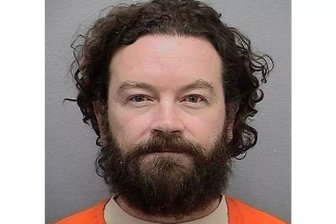Health experts say those taking to the streets to protest the death of George Floyd — a Black man who died after a white police officer knelt on his neck in Minnesota — should wear masks and practice social distancing to stay safe amid the novel coronavirus pandemic.

The protests, which began in Minneapolis, Minnesota last week, have now spread across the U.S., and abroad including to Canada.
In a series of tweets Monday evening, Canada’s chief public health officer, Dr. Theresa Tam, offered some safety advice, saying that when it comes to protesting amid the pandemic, “virtual protest is the safest bet.”
But Tam said that when that is not an option, demonstrators should bring hand sanitizer and clean their hands frequently.
Tam said protesters should also practise physical distancing, wear masks and use good “cough etiquette” — meaning coughing or sneezing into their elbow.
Anyone who is sick should stay home, she said.
However, Colin Furness, an infection control epidemiologist and assistant professor at the University of Toronto, said telling people to protest virtually is “not realistic.”
“This is a community in pain,” he said. “I am the last person ever to say ‘Yes, go out in a crowd,’ but I, in all good conscience, can’t say to people anything like protest virtually.”

He said that’s why it is “so important” to communicate how people can protest in the safest way possible.
Furness said that first and foremost, those looking to attend a protest should check the weather.

Get weekly health news
“The more humid and the hotter the temperatures, the less risky it is,” he said.
Furness explained that the respiratory droplets through which the virus spreads fall to the ground faster in humid environments and that the virus deactivates more quickly when exposed to heat.
Next, Furness said that if you are going to attend a protest, you should not only wear a mask but also pay attention to who isn’t.
“Remember that masks protect others,” he said. “So you want to look around and see who is not wearing a mask and take many steps back.”
Dr. Michael Mina, an assistant professor of epidemiology at Harvard T.H. Chan School of Public Health, told Global News that while masks may not stop all transmission of the virus, they do work to a certain extent, “sometimes very well.”
“I think that there’s a good chance that even homemade masks actually do quite a bit to help people not get infected and not transmit,” he said.

Furness said demonstrators can also alter the way they protest amid COVID-19.
“I would rather see noisemakers and signs and protesting by being there than chanting and hollering,” he said.
He added that chanting and yelling are “risky behaviours” because they “accelerate air out of the lungs” and could spread the virus.
Tam echoed Furness’ remarks, saying even with layers of protection, speaking loudly, shouting and singing can increase the projection of infectious droplets.
“To safe protest during #COVID19, let your sign do the talking, your phone do the singing & wear a mask,” she wrote on Twitter.
Outdoor protests
Furness said protesters should look for areas where they can demonstrate in open, outdoor spaces.
“I think this is where authorities — police and other authorities — can be helpful in terms of providing that space.” he said. “Create space so that a big crowd doesn’t have to be shoulder to shoulder.”
Furness also said people should try to limit their exposure as much as possible.
“The less time you actually spend in crowds, the safer you are,” he explained.

Could protests cause a spike in new cases of COVID-19?
Mina said he would “not be surprised” if in the next several weeks, there is a rise in transmission of the virus.
But he said it will be hard to know for sure if any new outbreaks will be a result of the protests or because businesses are also starting to reopen.
“And we’ll have to kind of be very careful about how we evaluate that data if we see new cases come about,” Mina explained.
Furness, too, said he is “mildly concerned” that there could be a spike in new cases due to the protests.
He said one way to know if that happens is to ask screening questions.
“The only way to really know the impact of protesting on COVID it is to ask,” he said. “When you get positive cases, ask people questions — demographic and behavioural questions.“

Furness said anyone who thinks they have been exposed to the virus should be tested.
But he said those individuals should also monitor for symptoms and consider being tested five to seven days after they attended a protest.
Furness explained this is because it takes a while for the virus to incubate.









Comments